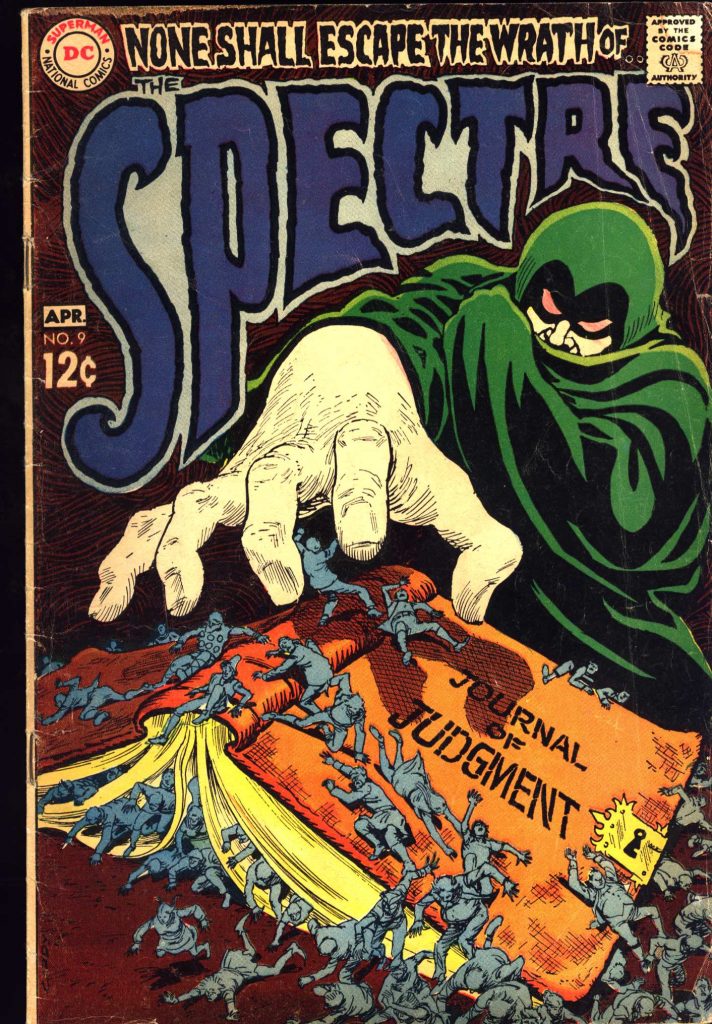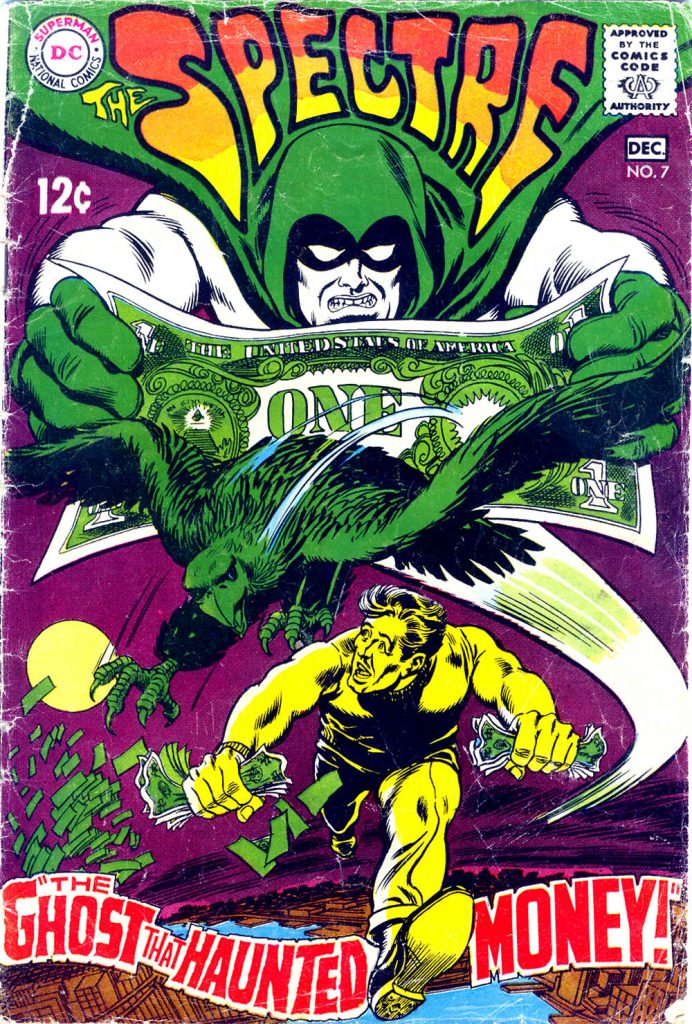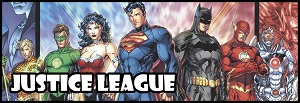How DC’s Silver Age FAILED the Spectre
So for those of you that watched our Golden Age Spectre videos, you’ll know that this character was co-created by Jerry Siegel, who also is known for co-creating Superman. After creating such a popular superhero as the Man of Steel, apparently the idea of the Spectre was to push the limits of a superhero’s powers even further. The end result, at least at first, in my opinion, very nearly stumbled onto what was great about the Spectre. Jerry Siegel and Bernard Baily both had the right idea of how a character could work in the first two issues that introduced the character.
For all his added power, far greater and limitless than even Superman, the Spectre could still be interesting and feature a sense of stakes by playing up the dread factor. Early Spectre comics, long before the CCA was a thing and featuring the writing of one of the best writers of that time period, were pretty good because they kind of understood that, and feature a lot of cool art reflecting this particular tone that would one day come to define this character. As dated as these books could be, they did have something. However, writing duties changed, the Spectre spread into the JSA, and pretty quickly, he was treated like any other superhero. Except he was so powerful and his weaknesses so few and far between, that few if any Golden Age Spectre stories had any sense of stakes to them.
With interest in the Spectre flagging, and DC increasingly resorting to other characters to sell the book featuring the spirit inhabiting Jim Corrigan, DC did the worst thing they could have done to the character, and paired him off with a Scrappy Doo-style sidekick named Percival Popp, the Super-Cop. It all went downhill from there, to the point that by the time things came to an end, the Spectre had been rendered permanently invisible, Jim Corrigan was written out of the story entirely, and Percival Popp, a miserable character designed so heavily to appeal to kids no child in their right mind would like him. Things ended pretty abruptly at that point, with Jim Corrigan and the Spectre disappearing completely, and without any explanation, for over an astounding 20 years.
I’m not sure how copyright law worked at that point, but I suspect DC could have easily lost the character, were it not for the fact that nobody cared enough to try and steal him. Eventually, somebody at the company must have clued in, especially as they started looking back on the JSA, having retroactively assigned Golden Age DC comics to events taking place on a different world than the Silver Age comics. And so it was revealed that the Spectre had been a hero of Earth 2 all along, and, across three issues of their Showcase book, they detailed and explained his 20 year absence and sudden return.
I was pretty excited going into this thing, expecting that the fresh eyes of the Silver Age writers and artists could start to give us the Spectre we only got hints of at the Golden Age. Unfortunately, that’s not at all what we actually got, and instead I found the initial Silver Age Showcase comics were functionally identical to the Golden Age Spectre stories! It was alarming to discover, outside of some updated and better preserved art, that nothing had changed at all. We got the same old sort of stories, vague and sprawling, with little sense of stakes or weight to them due to the enormity of the Spectre’s power.
Luckily, it wasn’t all like that. The Spectre’s story in the Crisis of Multiple Earths was great, and a lot of fun. That sort of thing was totally new for the character but an excellent example of the sort of great times that could be had in this particular era of DC comics. All that stuff with the two Earths colliding and an unstoppable Anti-Matter being, in hindsight, were also a great little hint at what was to come. Similarly, I enjoyed the Brave and the Bold comics where the Spectre got to team up with Barry Allen and Batman of Earth 1. All of that reflected the excellent sort of writing from the likes of Gardner Fox, a big name from this time in DC history that did a good job with this sort of writing. With that, DC saw fit to give the Spectre his own solo series.

This is where thing, in my opinion, got really interesting. Gardner Fox did a lot of the writing in the first half of this series, and in spite of his legendary status within comic book history, just like Jerry Siegel, it feels like the same mistakes were being made all over again. Not only that, but we returned to the status quo in the weirdest ways. Jim Corrigan moved to a different city but once again was given a fiance, once again the stories lost a sense of stakes due the Spectre’s power and no other superheroes to regularly balance things out, and once again, the Spectre started fighting an endless parade of mystical threats he would conquer time and time again, without issue.
That’s when another big name in the world of Silver Age DC comics entered the picture. A new artist at the time named Neal Adams started to draw and even write for the series, and for all of Adams flaws as a writer, particularly in the present day, he actually did a pretty good job writing for the Spectre. While he hardly perfected the character in ways others would in the future, Adams understood this superhero and was able to write for him in a way that Gardner Fox and Jerry Siegel, for all their talents, simply could not. Neal Adams was finally able to make the Spectre feel dangerous and terrifying, where you never knew what he might be capable of, and that feels so essential for a character this powerful.
So he dug into the roots of this character, bringing back long time DC villain Psycho-Pirate, along with Gat Benson, the man who originally killed Jim Corrigan, and a bunch of other content in this one, awesome story that felt like it brought everything the Spectre was about up until that point full circle, and ready to strike out a new direction for this character deeply ingrained in horror and suspense. Any ideals of making the Spectre a traditional superhero had to be abandoned, and Neal Adams then showed how the Spectre could not be trusted to control his powers entirely, while he was also given a major weakness to hopefully keep said powers in check.
All that clearly was an attempt to find a place for the Spectre, but sadly, as close as Adams got to achieving a solid design for the Spectre that reflects what he would one day become, he didn’t quite manage it, or would the many others who worked on the series.

And because so many people worked on the damn thing in spite of it only being ten issues long, quality started to vary considerably. So, once again, sales flagged for the Spectre, just like they did in the Golden Age, with too many of the same mistakes repeated all over again. And, just like in the Golden Age, in a final bid to save the Spectre, they only made things worse. After the Spectre straight-up murders a guy – and hey, credit to the writers for pushing the character into a new direction right up until the end – the Spectre was separated from Jim Corrigan for good, and effectively made into the narrator of what was now suddenly a horror anthology series. That lasted for a whole two issues, a which point sales must have imploded because the series was cancelled. A year later, the Spectre was literally dug up out of a tomb for some reason, just so that they could kill him off in one final adventure with the JSA.
It wasn’t a bad send-off that hearkened back to his adventure during the Crisis of Multiple Earths, but the good news is that this time around, DC wasn’t going to give up on the character for another twenty years. This time they would only wait four until they would try again with a new take on the Spectre. Because, while all this was happening and the Spectre was struggling due to writers at DC essentially having been telling the same type of superhero stories for over twenty years, over at Marvel, a few fine gentlemen were changing everything we knew about the world of comics.
DC, though they had been lagging behind in the Silver Age, would take notice, and change just like Marvel in the Bronze Age, as comics became more adult-oriented again, the power of the Comics Code Authority began to wane, and for a character like the Spectre, that presents a lot of potential. And once again, the Spectre would be given to some of the biggest names in comics during that particular era at DC. So the question becomes, were big names like Doug Moench, Alan Moore, Marv Wolfman, and George Perez going to be able to tackle the Spectre, and finally bring out that awesome character we all know from the modern age?
Well, I’m happy to tell you all that we’ll be covering that time period to. As part of a Patreon request by Jeremy Renfro, I’ll be going over the entire history of the Spectre, right up to present day. To that end, stay tuned, because, though we will be taking a bit of a break between each era, Jim Corrigan and the Spectre will return in then controversial series called Wrath of the Spectre!









You must be logged in to post a comment Login